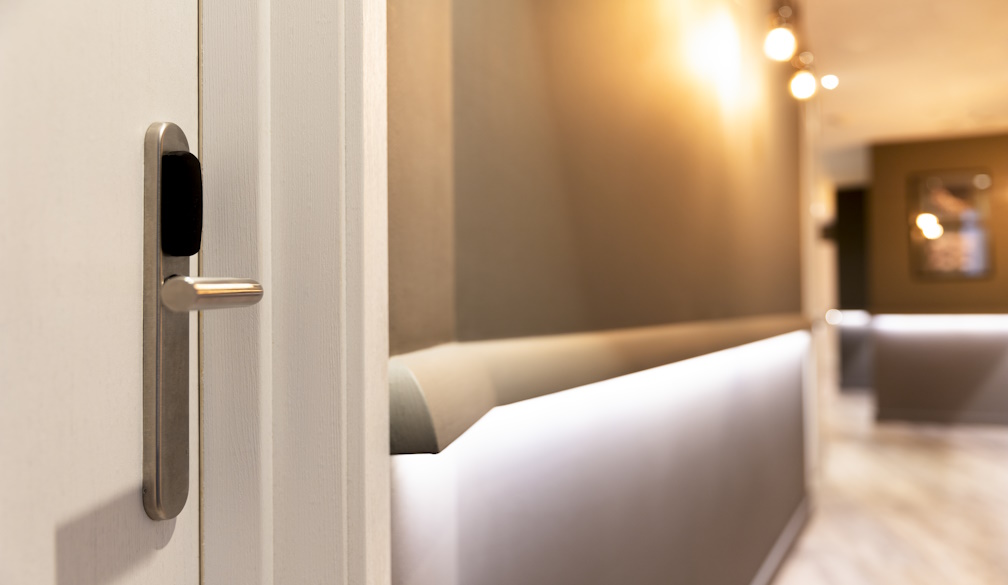How A Smart Door Lock Enhances Home Security And Everyday Convenience
- Written by Scene Magazine

Modern households are increasingly choosing technology-driven solutions to improve safety, comfort and accessibility. One of the most popular upgrades today is the smart door lock, a device that provides secure, keyless entry and advanced control features that traditional locks cannot offer. Homeowners appreciate the ability to unlock doors using PIN codes, fingerprint recognition, Bluetooth, or smartphone apps. This flexibility makes entering the home easier while strengthening overall security. With more families seeking convenience without compromising safety, smart door locks have become an essential addition to contemporary living.
Why A Smart Lock Offers Safer And More Flexible Access Control
Modern security needs require smarter solutions, and many homeowners now prefer a Smart lock because it combines strong physical protection with digital access control. Unlike standard locks that rely on mechanical keys, smart locks allow multiple access methods and can track entry activity. This ensures greater peace of mind, especially for busy families, rental property owners and individuals wanting better control over who enters their home. With features like temporary codes and remote access, smart locks help manage visitors, tradies, guests and family members without needing to hand out physical keys.
Providing Keyless Entry For Faster And More Convenient Access
One of the greatest benefits of smart door locks is the ability to unlock the door without searching for keys. PIN pads, fingerprint scanners and smartphone access ensure quick entry, especially when hands are full with groceries, children or bags. Keyless entry also eliminates the stress of lost keys, lockouts or copying keys for multiple users. Many smart locks include auto-lock functions, ensuring the door secures itself even if someone forgets to lock it manually.
Offering Enhanced Security With Advanced Authentication Technology
Smart locks use modern authentication technology that provides stronger protection than standard locks. Fingerprint recognition ensures only approved users can enter, while encrypted digital codes prevent duplication. Many models send alerts to the homeowner’s phone if someone attempts to enter incorrectly or if the door is left unlocked. These real-time notifications keep homeowners informed of all access attempts, improving general safety.
Supporting Remote Access For Families And Property Managers
Remote access is one of the most valuable features of a smart lock. Using a mobile app, homeowners can lock or unlock the door from anywhere, which is especially helpful when letting guests in, allowing deliveries, or checking on home security during travel. Property managers and Airbnb hosts use smart locks to avoid changing keys between guests. They can assign temporary codes that expire automatically, reducing security risks associated with physical keys.
Allowing Temporary And Customisable Access Codes
Smart door locks give homeowners full control over who enters the property and for how long. Temporary codes can be issued to cleaners, contractors, pet sitters or visiting relatives. These codes can be restricted by time or date, adding another layer of protection. This level of custom access makes managing visitors easier and prevents unauthorised entry.
Improving Home Security With Tamper Alerts And Automatic Locking
Many smart locks include tamper alarms that activate if someone attempts to force the lock or break in. This immediate warning allows homeowners to respond quickly. Automatic locking is another crucial feature, ensuring the door never remains unlocked accidentally. Whether using timed locking schedules or proximity-based auto-locking, the home remains secure at all times.
Providing Integration With Home Automation Systems
Smart door locks can integrate with wider home automation ecosystems. When connected to smart lighting, cameras or alarm systems, they create a coordinated security network. For example, unlocking the door may activate entry lights or disable the security alarm. Integrating smart locks with automation systems enhances convenience, efficiency and safety throughout the entire property.
Enhancing Accessibility For Elderly Or Mobility-Challenged Individuals
Smart locks offer significant benefits for individuals with limited mobility. Without needing to turn a key or grip a handle tightly, entry becomes easier and safer. Remote unlocking allows family members or caregivers to assist without being physically present. These features make smart locks an excellent solution for independent living.
Offering Durable, Weather-Resistant Designs For Long-Term Use
High-quality smart door locks are built with sturdy materials resistant to weather, corrosion and wear. Whether installed on coastal homes, busy city apartments or outdoor gates, they maintain performance and reliability. Their robust construction ensures long-term use even in harsh conditions.
Increasing Property Value While Modernising Home Design
Installing a smart door lock adds modern appeal to any property, making it attractive to potential buyers or tenants. As smart home technology becomes more mainstream, homes equipped with digital features gain a competitive advantage. Smart locks are a relatively small investment that significantly improves functionality, security and long-term value.
Conclusion
Smart door locks provide a powerful combination of security, convenience and modern technology for today’s homes. With keyless entry, remote access, custom access codes, tamper alerts and integration with home automation systems, they offer far more than traditional locks. Whether improving family convenience, enhancing safety or modernising a property, a smart lock delivers long-lasting value and peace of mind. For homeowners seeking a secure and efficient upgrade, smart door locks remain one of the most impactful and user-friendly choices available.


















